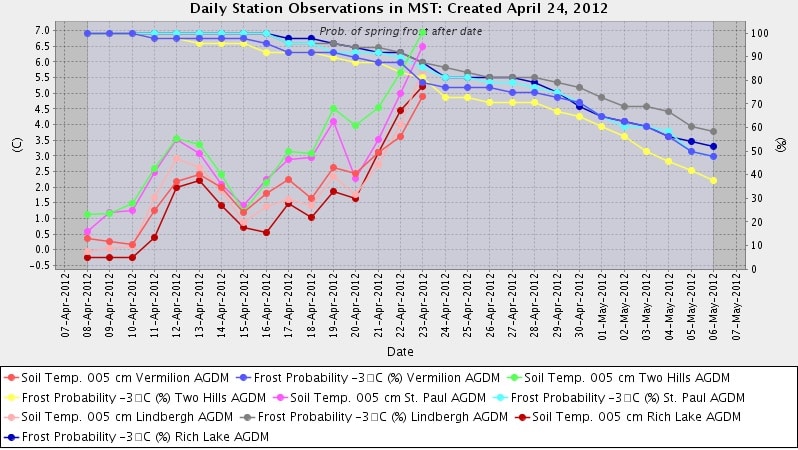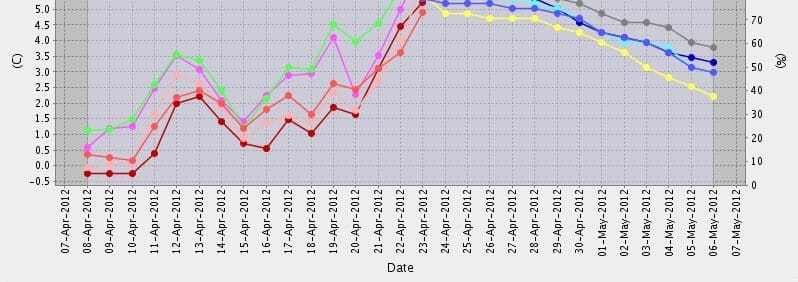The ideal soil temperature for canola is 10 C but you probably don’t want to wait that long to get started. Canola can germinate in soils as cool as 1-2 C, but growth will be very slow until soils warm up. Therefore, canola germinating and growing in cool soil conditions will have prolonged exposure to diseases as well as insects. As well, the longer it takes for canola to emerge, the fewer days of flea beetle protection seed treatments can provide for emerged seedlings. Overall seedling survival can be lower in cool soils, often resulting in an uneven stand.
A good starting point for seeding canola is when the three-day average soil temperature in the seed zone is 4-5 C. This is the temperature where biological activity typically begins.
Use a soil thermometer and take readings at 8:00 a.m. and 4:30 p.m. over a few days and average the results. Because canola is seeded at 1” deep, test the soil temperature at that depth. Be consistent. With a probe-style thermometer, one tip is to dig a small hole and insert the thermometer horizontally at seed depth. This makes sure the reading is based on the correct soil depth.
If a probe thermometer is too slow, consider an infrared thermometer — available at most hardware stores. You need to dig down to the target zone, but once there, the thermometer reading is instantaneous. A digital contact probe thermometer is pretty quick, too.
In combination with soil temperature, check the weather forecast and consider the frost risk. If soils are cold but the forecast is for warm temperatures and frost risk is acceptable to you, it may be an appropriate time to seed. The graph below, taken from Alberta Agriculture Agroclimatic Information Service , combines the soil temperature and frost risk for 5 sites in north east Alberta. While the soil temperature is good, the risk of a -3 C frost is still quite high for the next two weeks.
Plants emerging in cool temperatures are cold hardened and can tolerate a little more frost. The worst combination is a stretch of warm days followed by a drop to minus 2-3 C at night. With warms highs, plants will have lost their cold hardiness and the sudden frost can bring significant losses. If seeding early, don’t skimp on seeding rates. Consider bumping rates by 0.5 lb./ac.

Other links:
Manitoba soil temperature readings.
Effect of Seeding Date on Canola Yields as Reported by Farmers
Optimum Seeding Date and Rates for Irrigated Grain and Oilseed Crops
CCC factsheet on ideal seeding timing
MASC chart showing relationship between seeding date and yield

